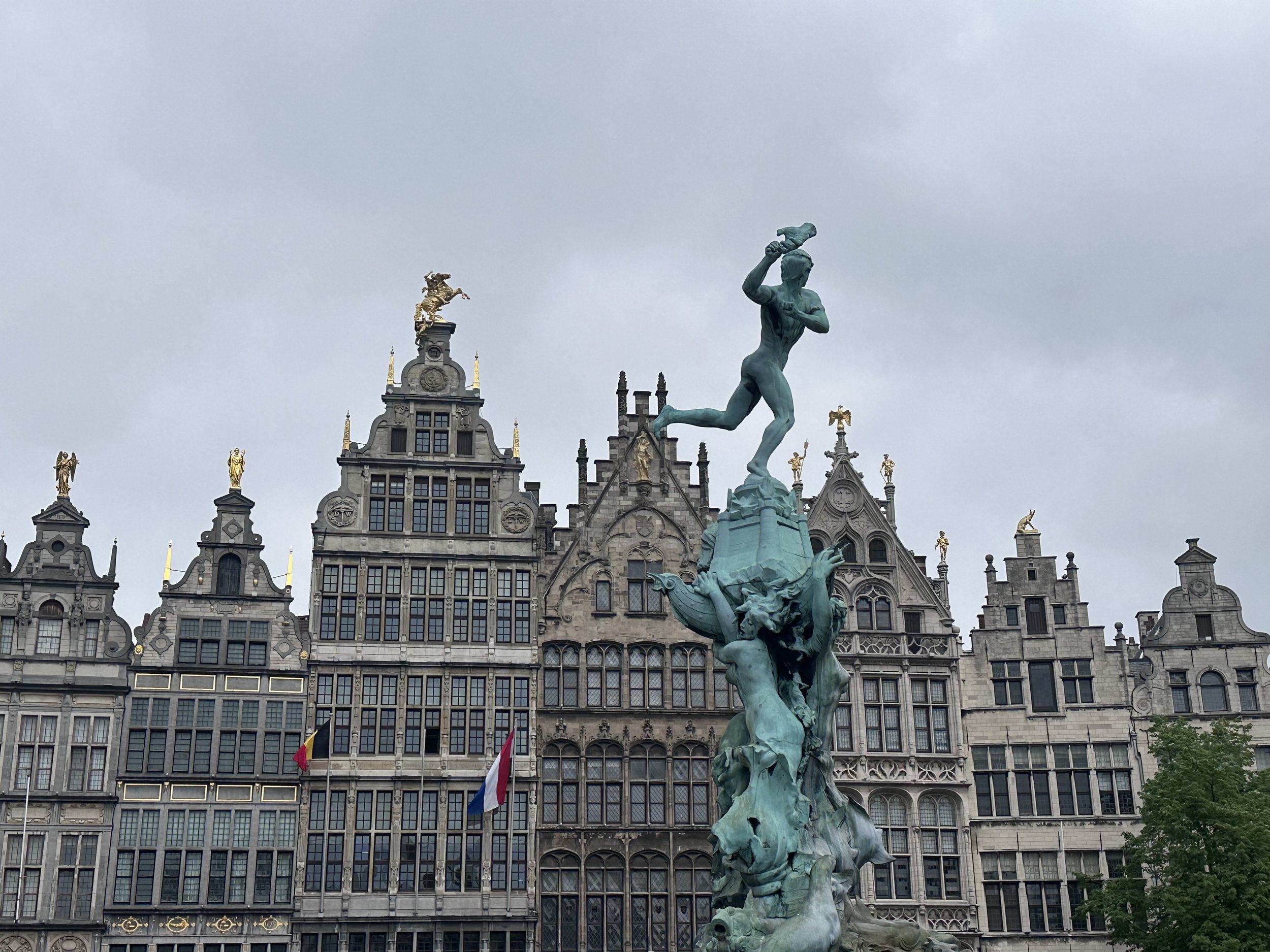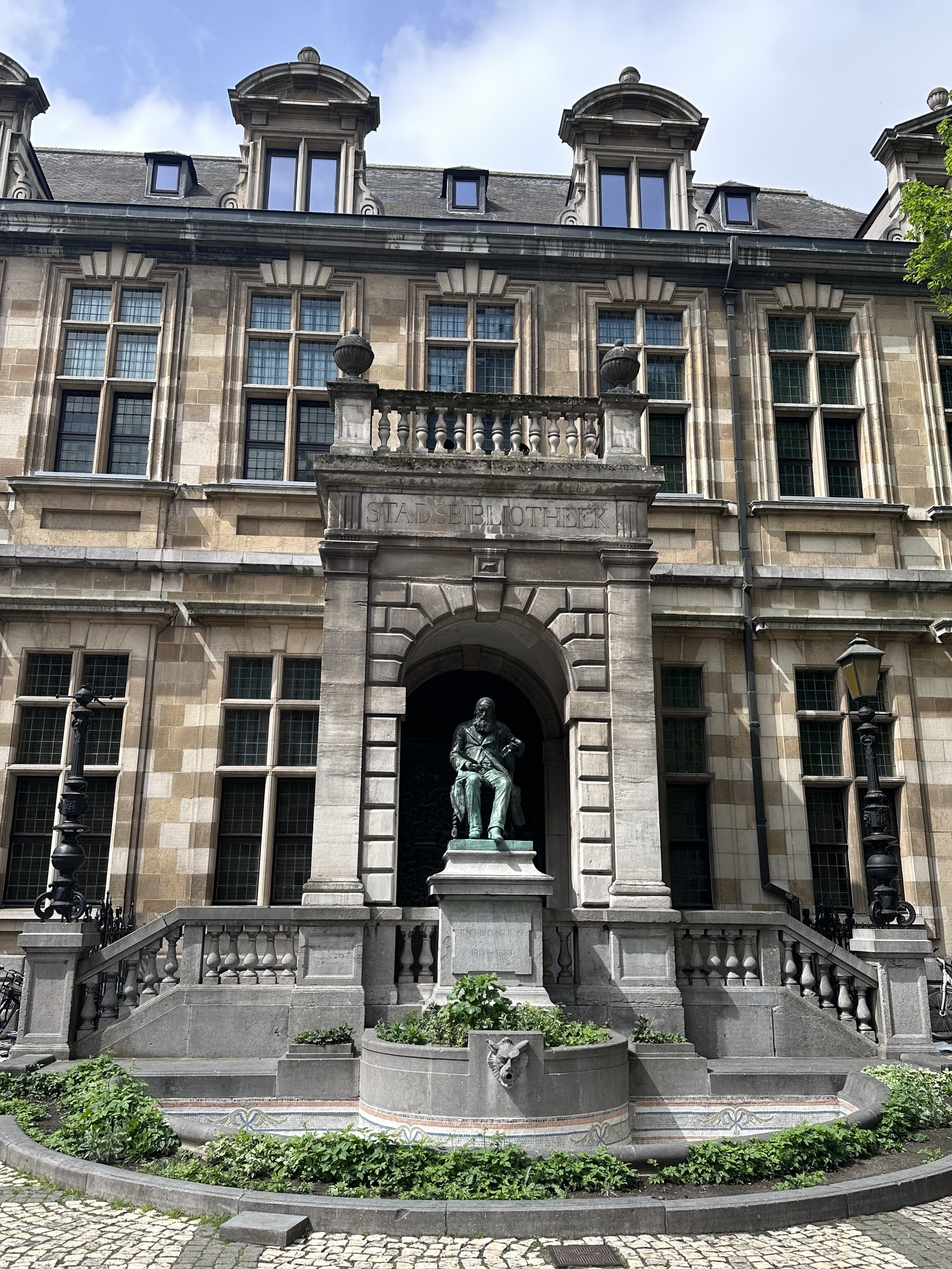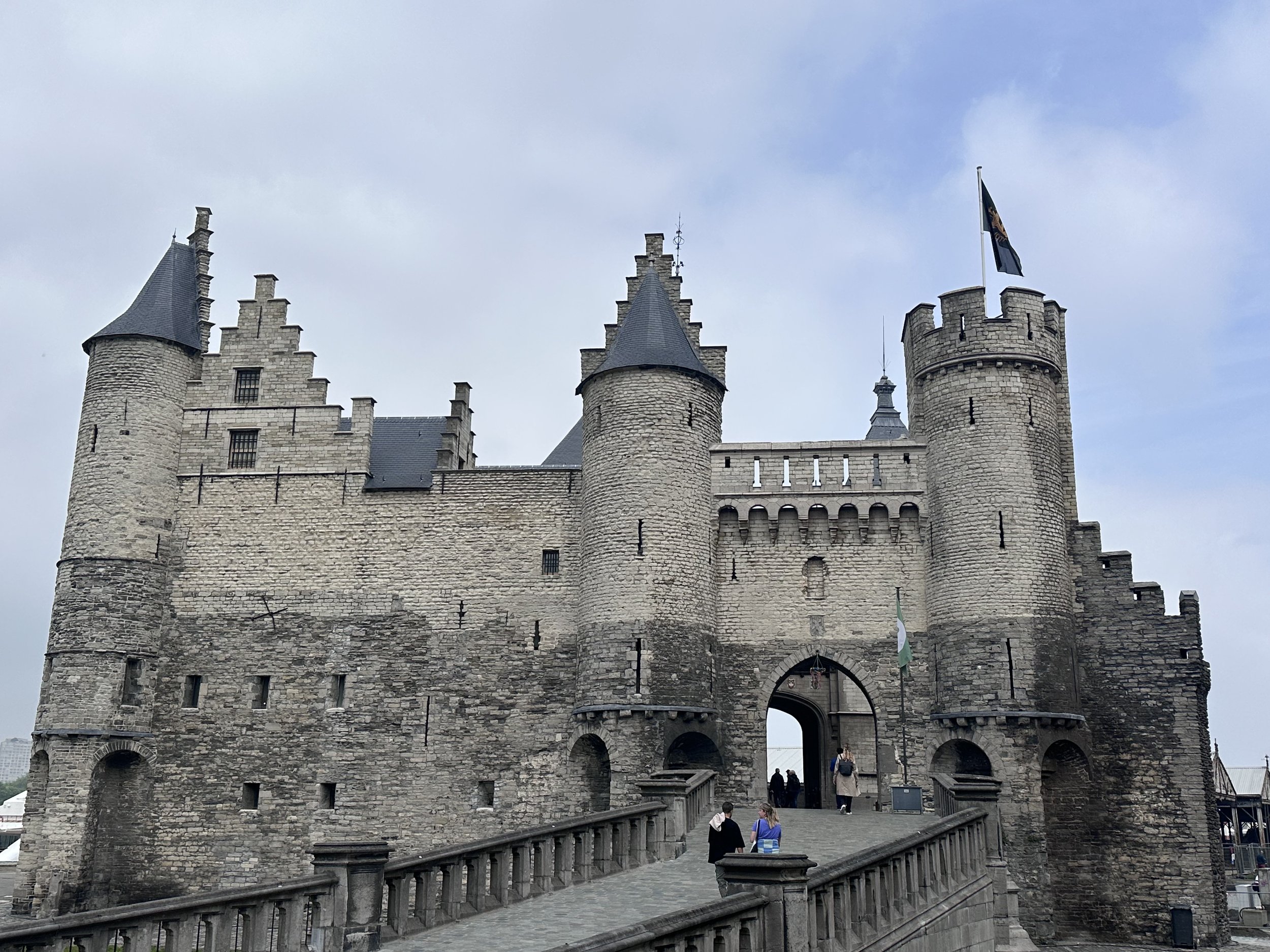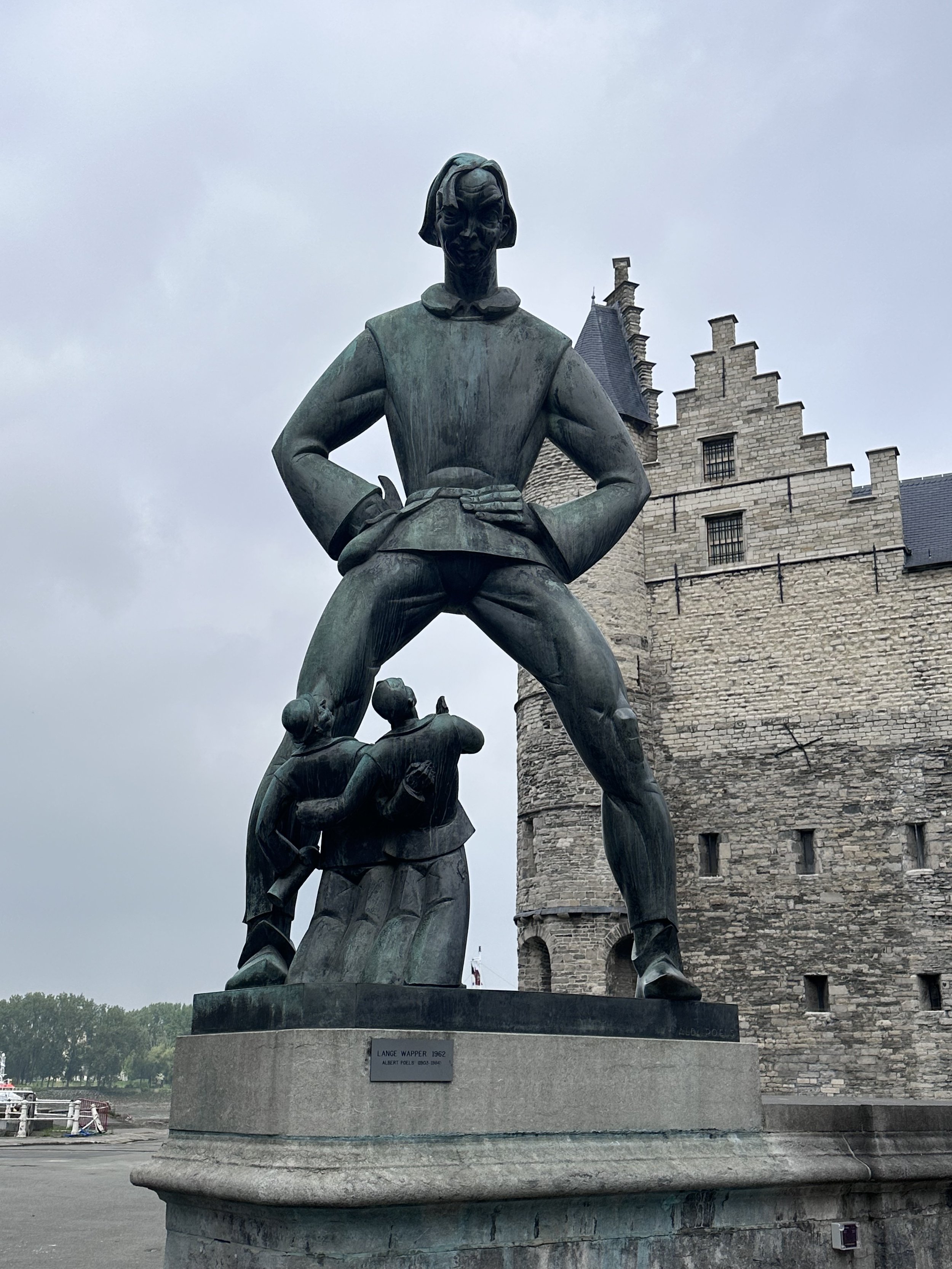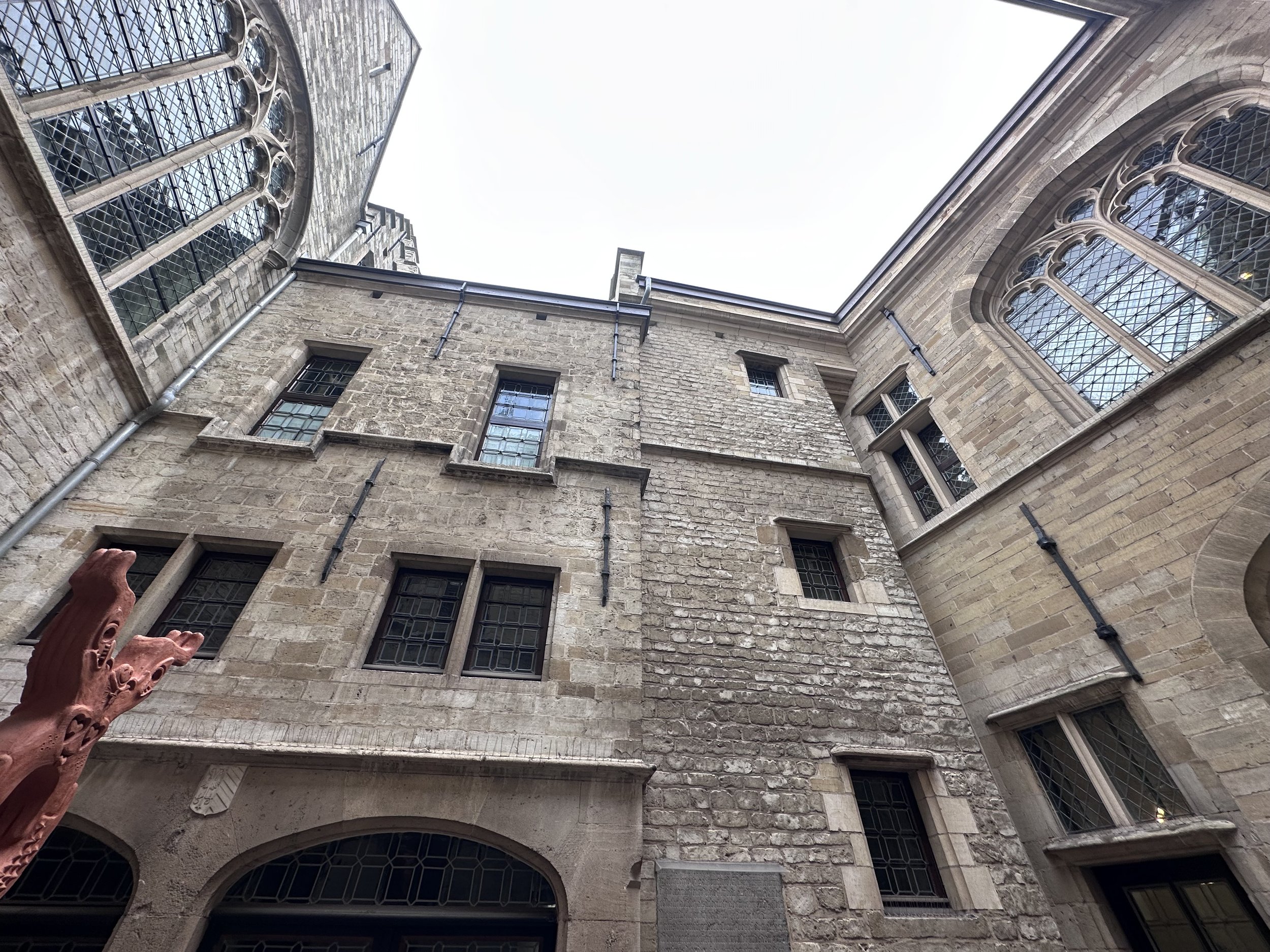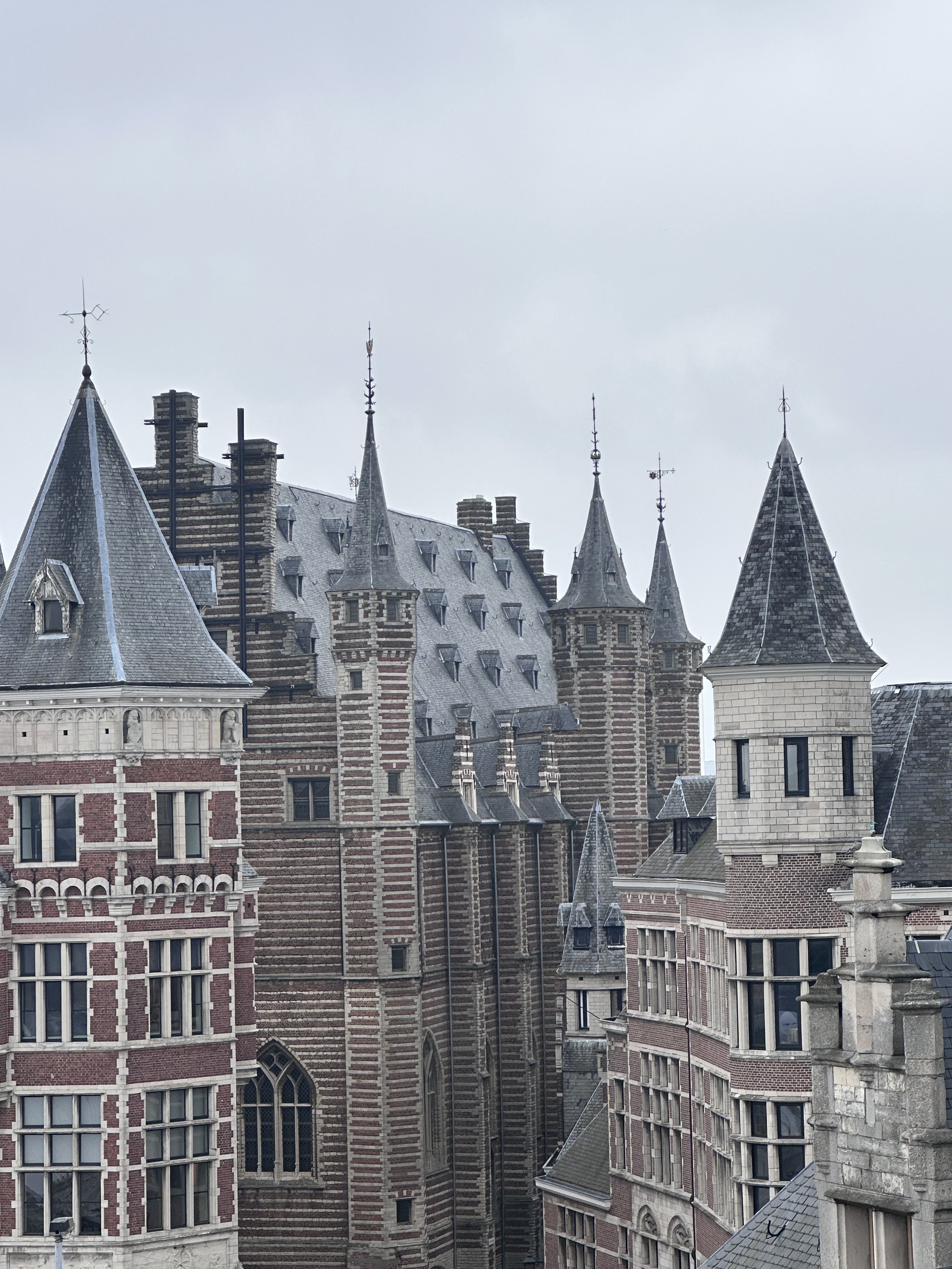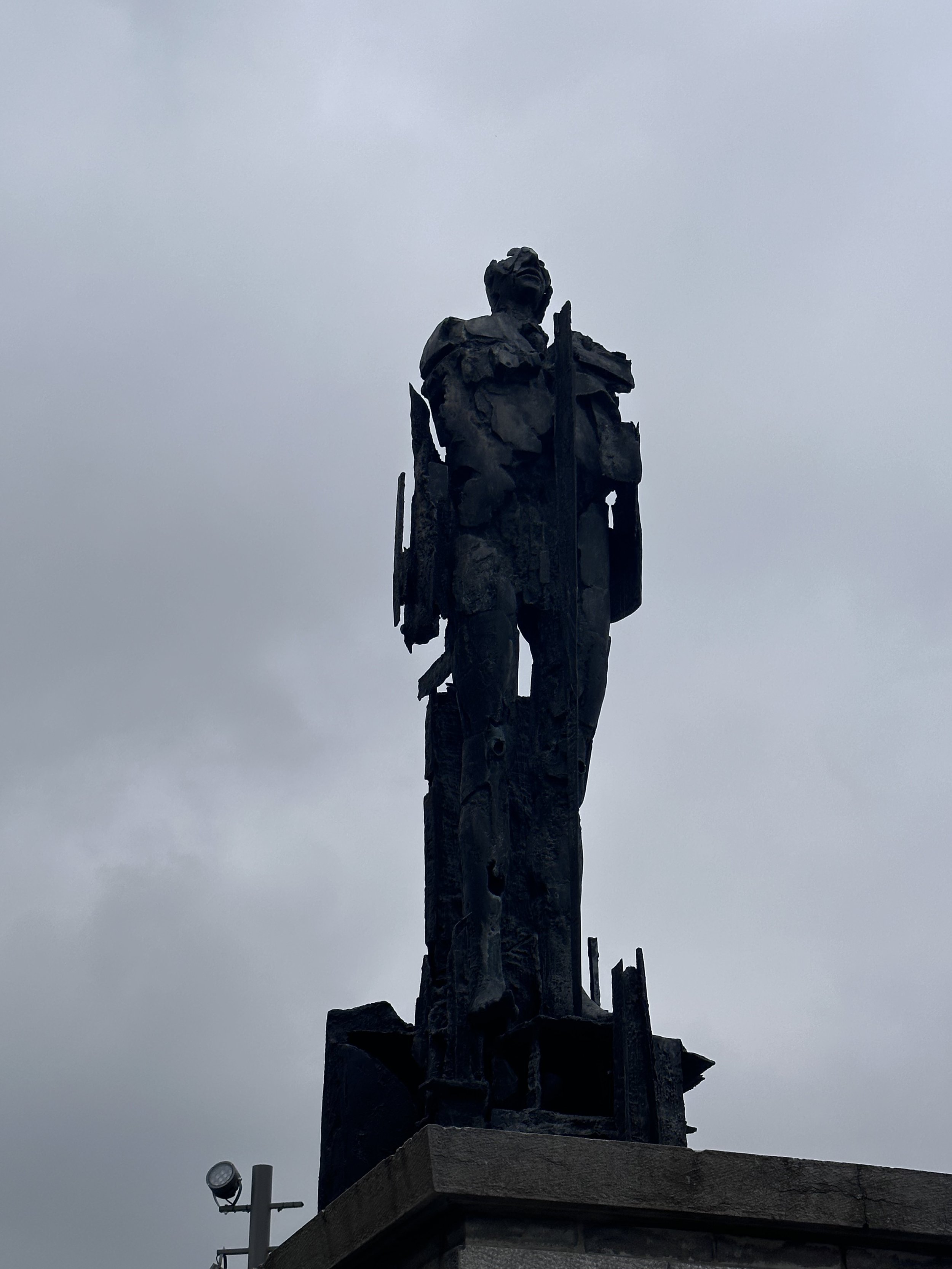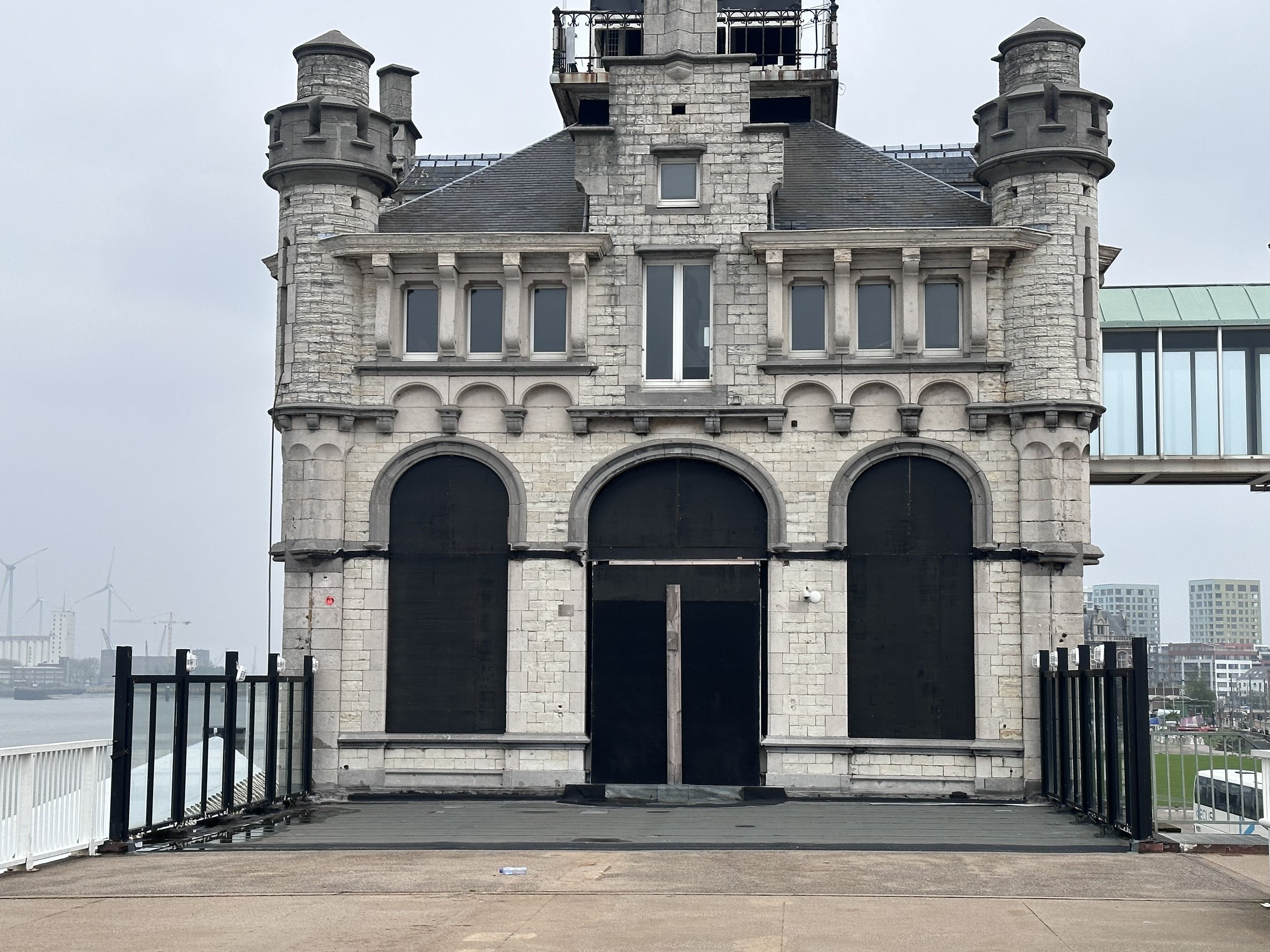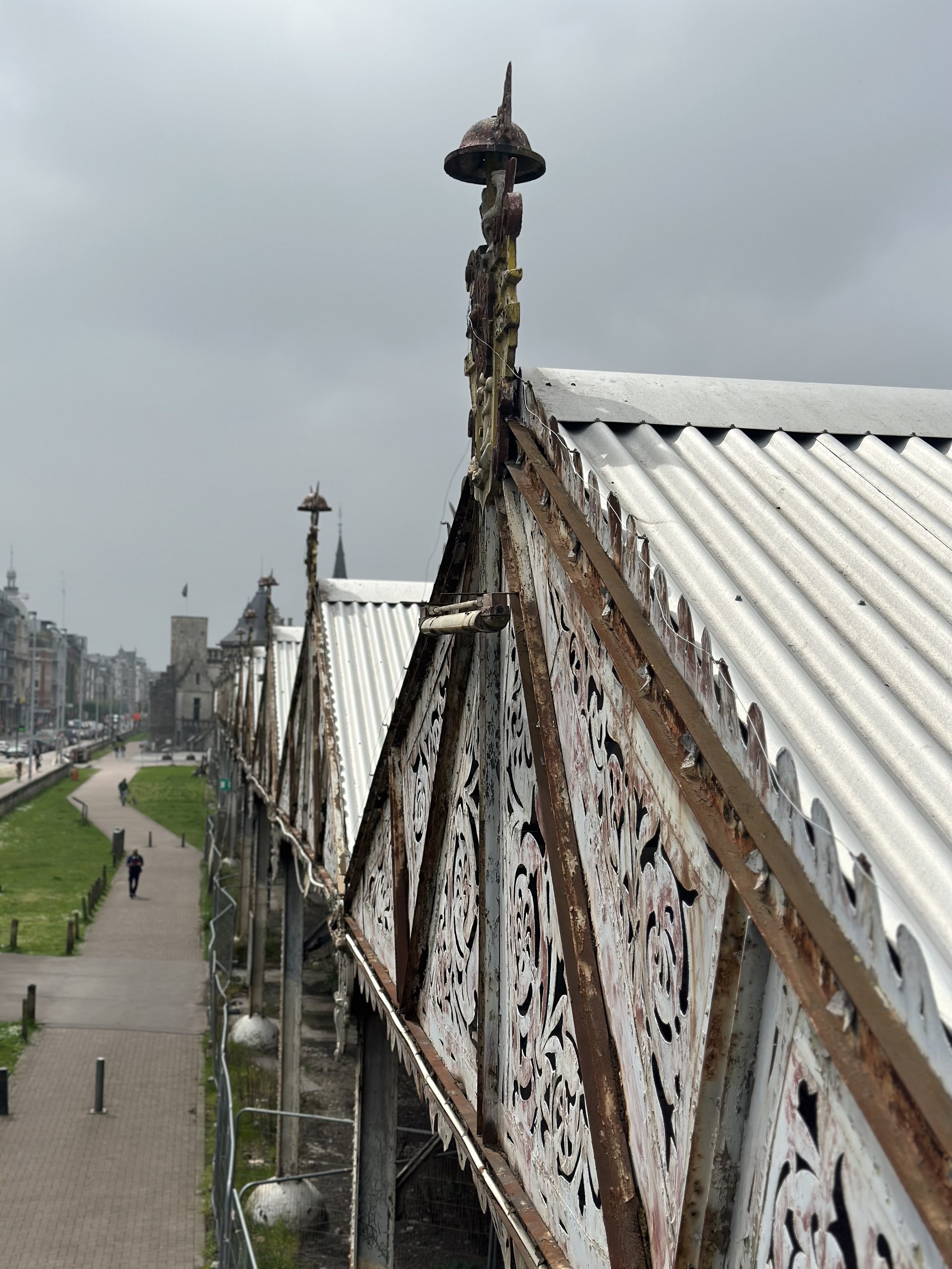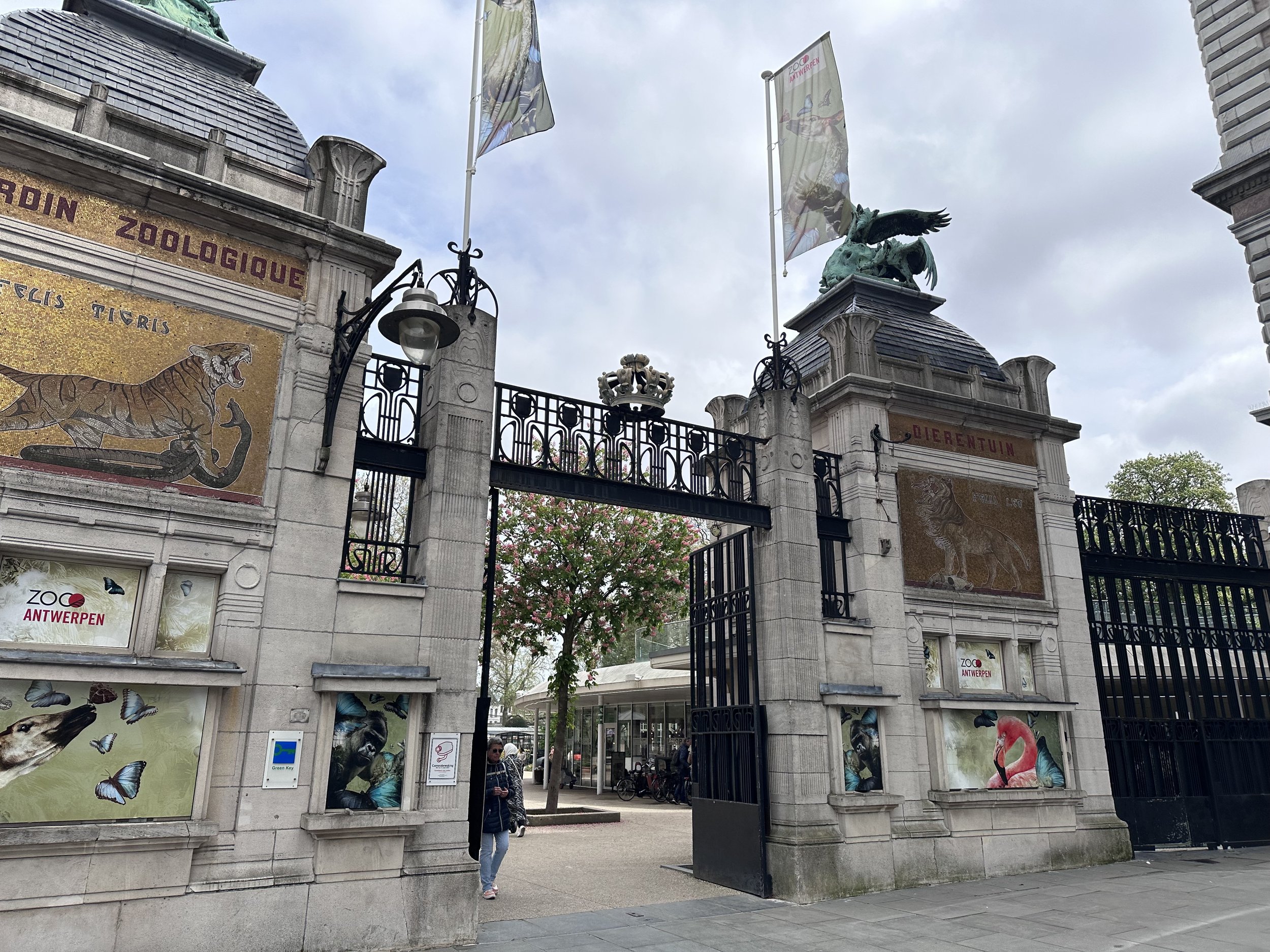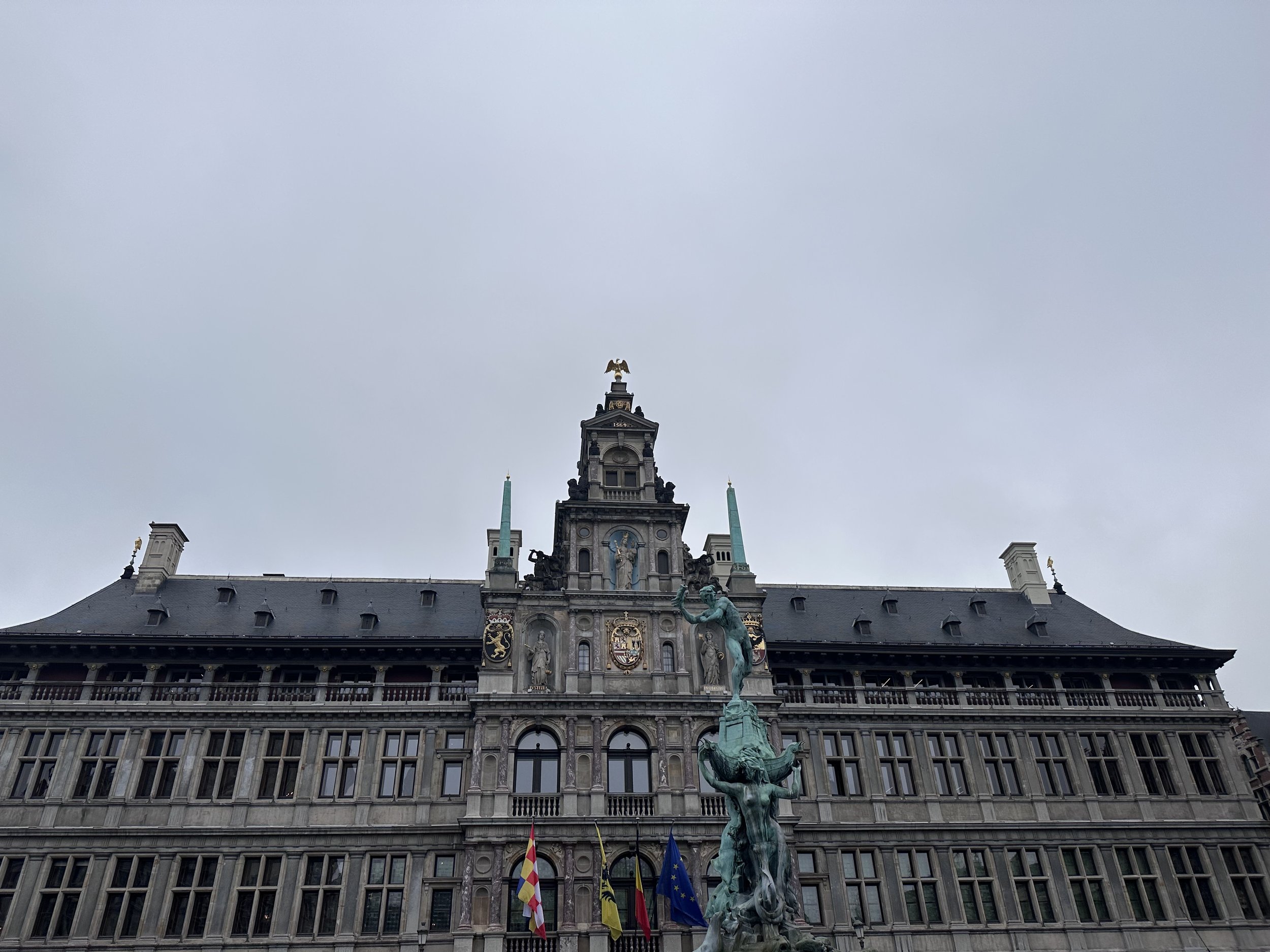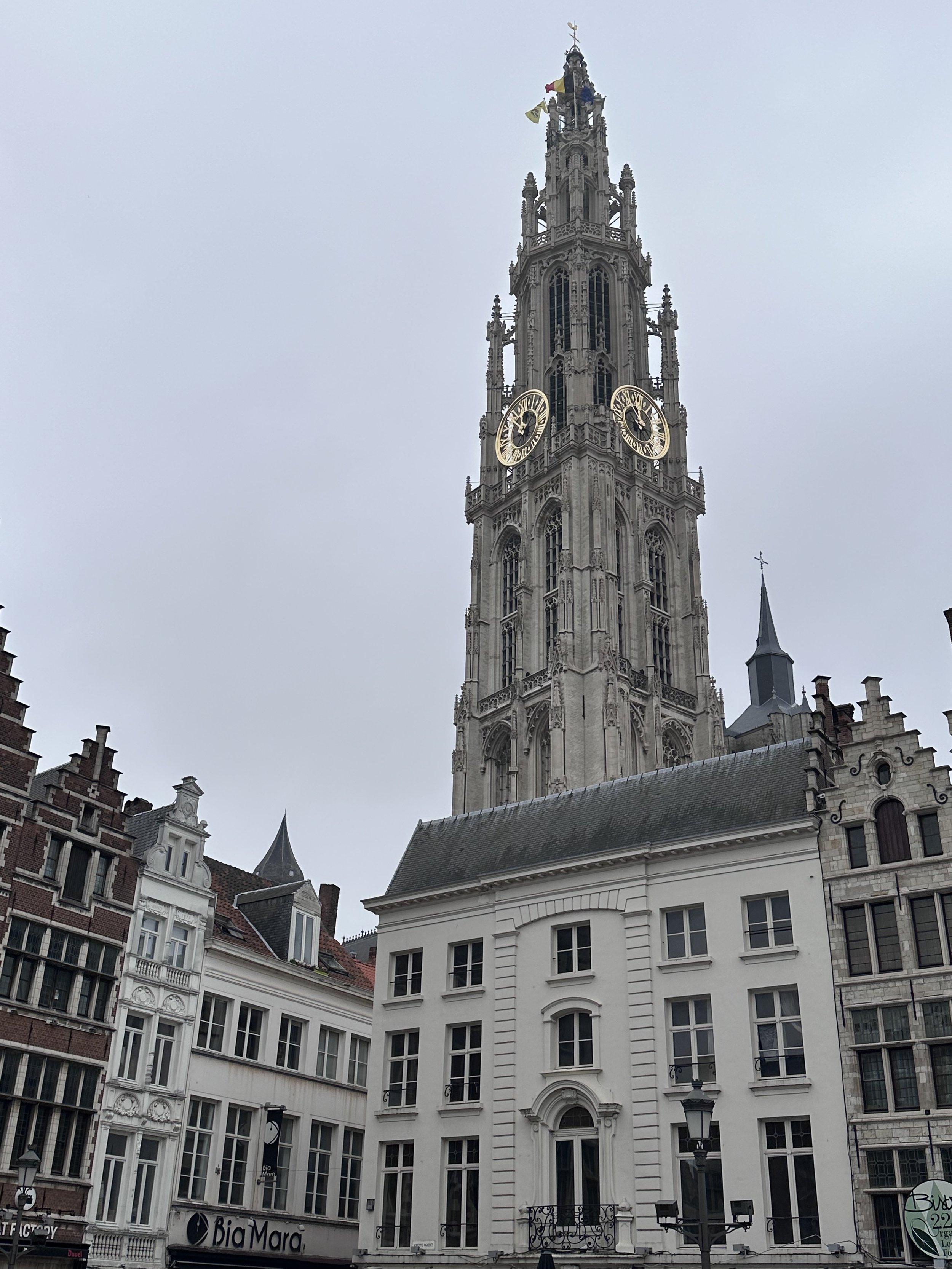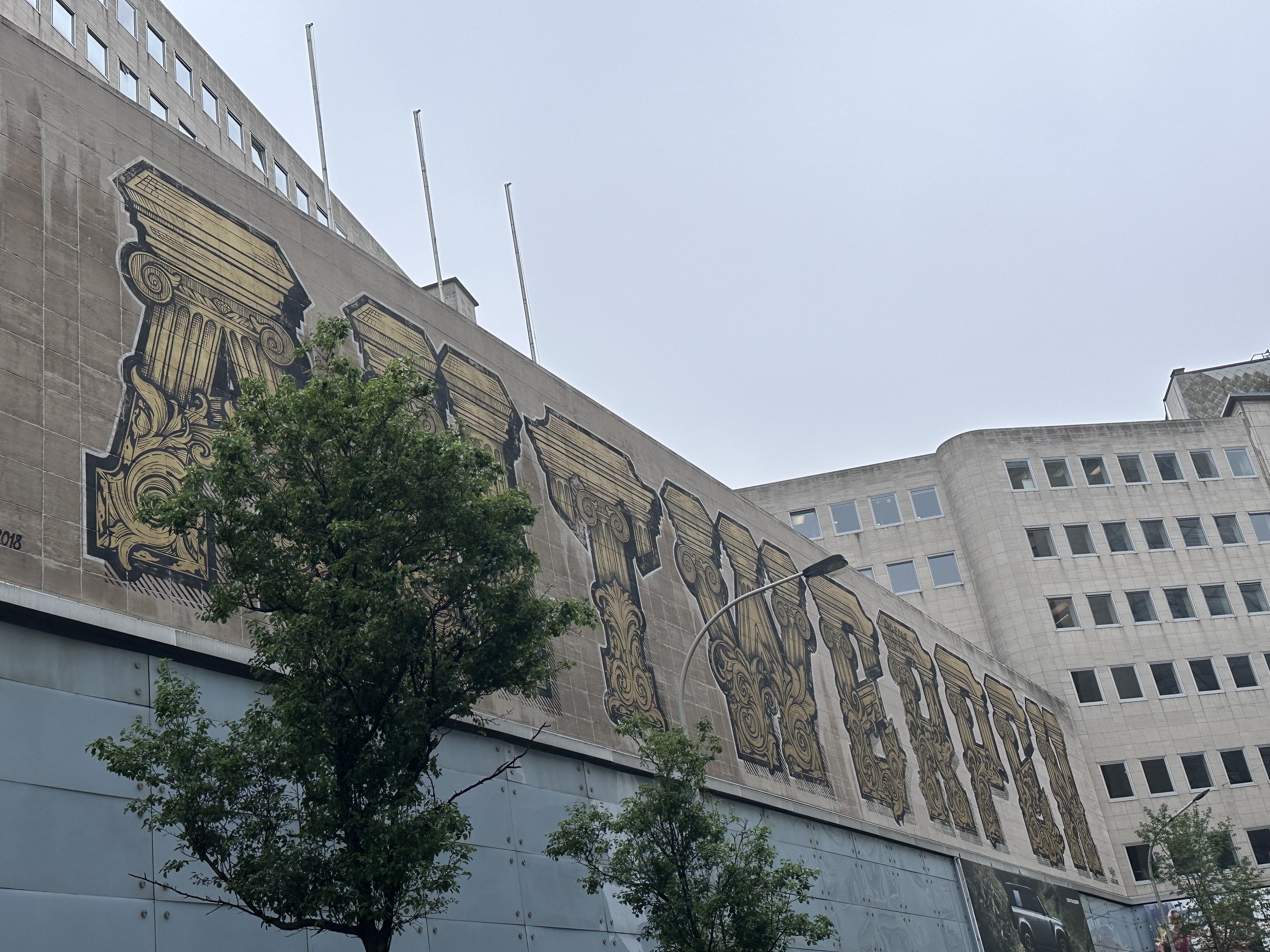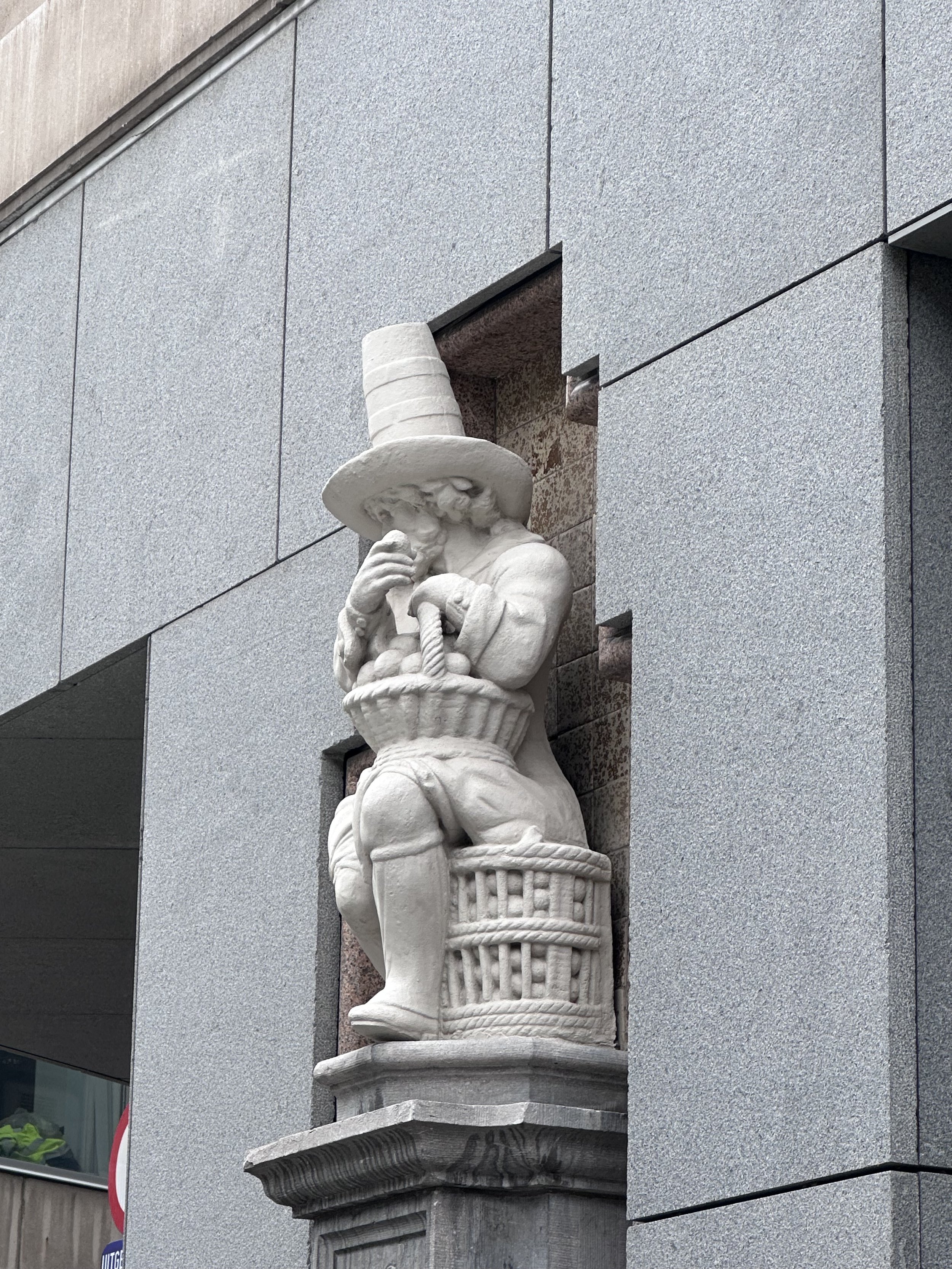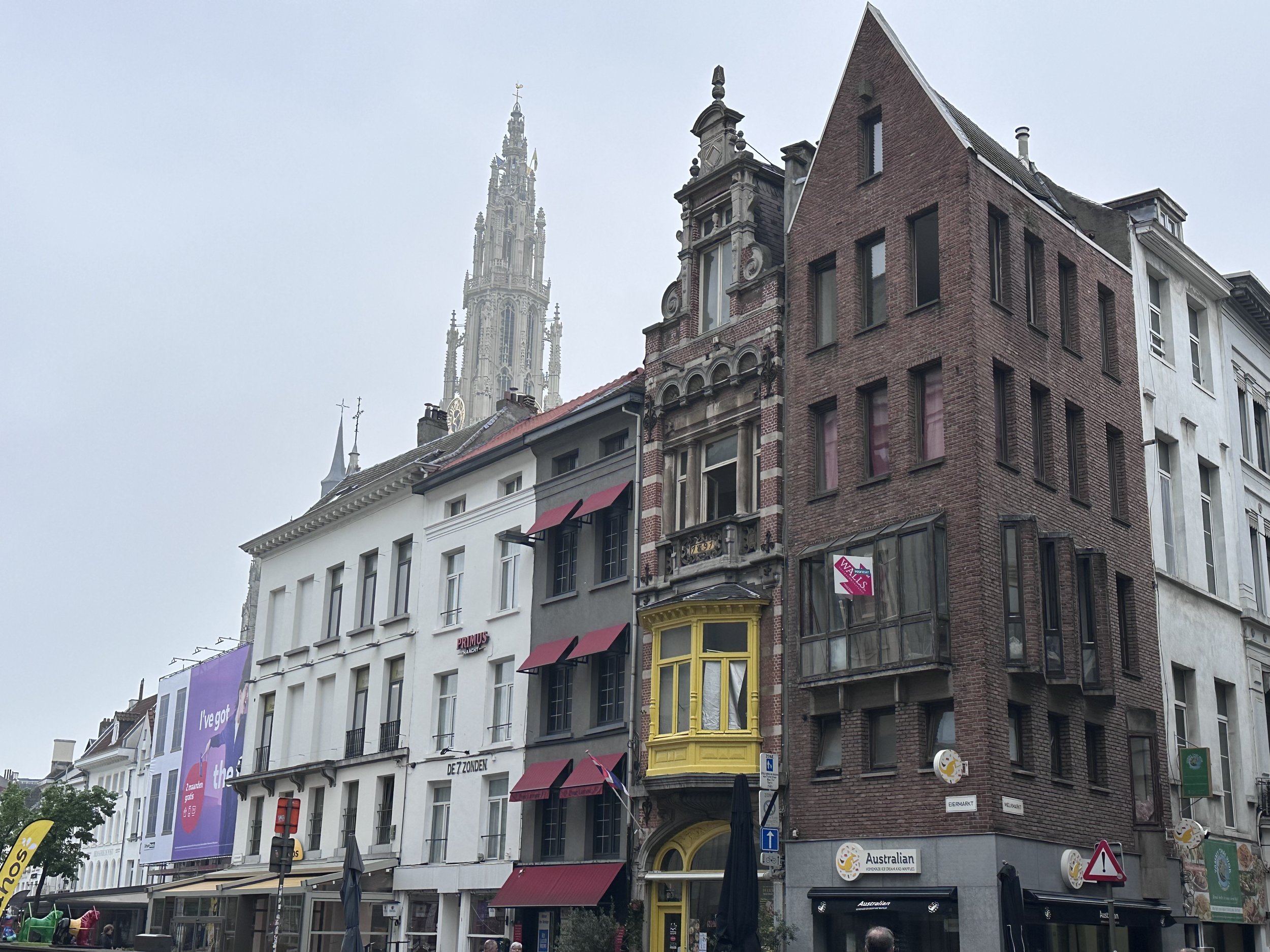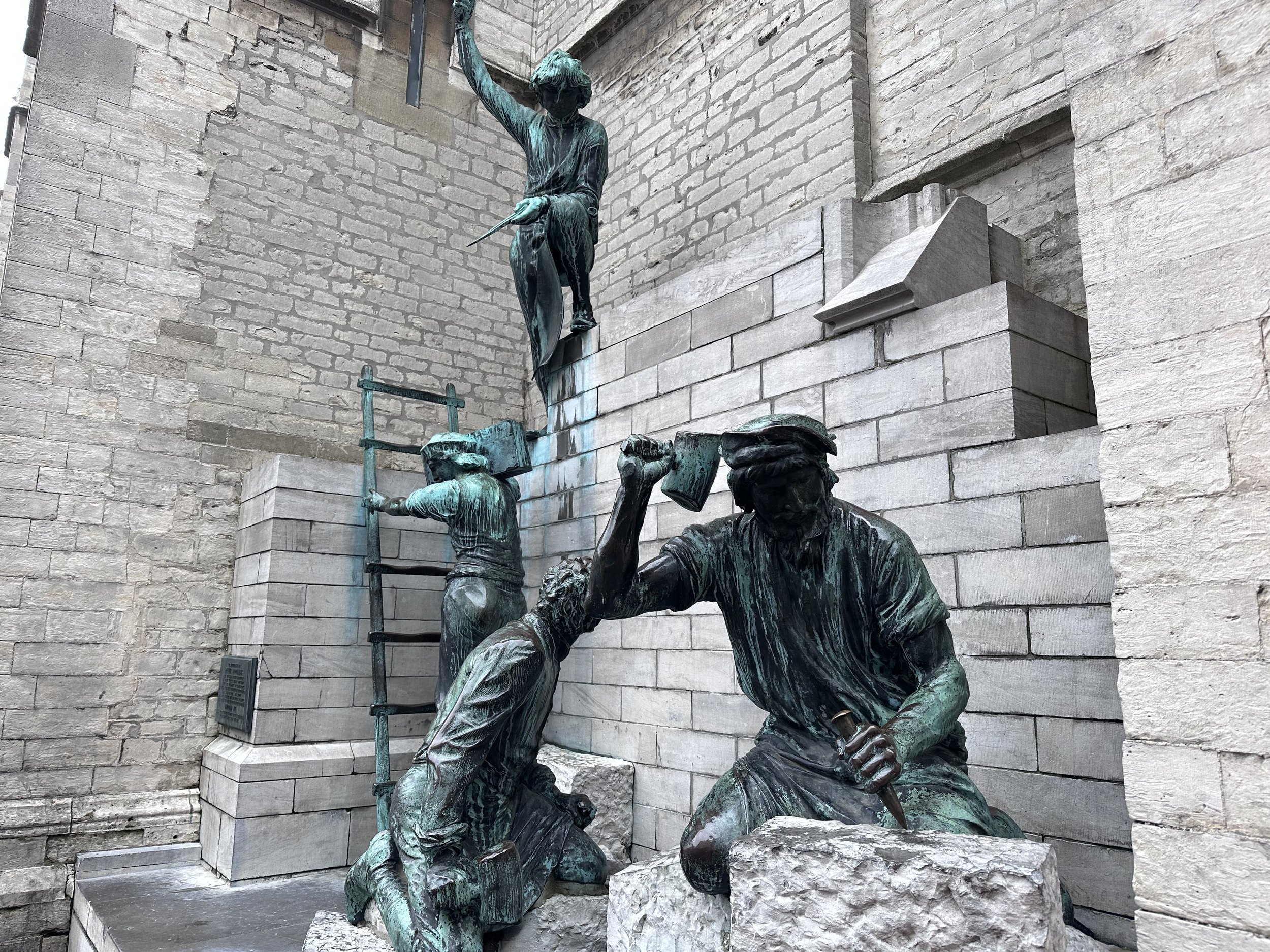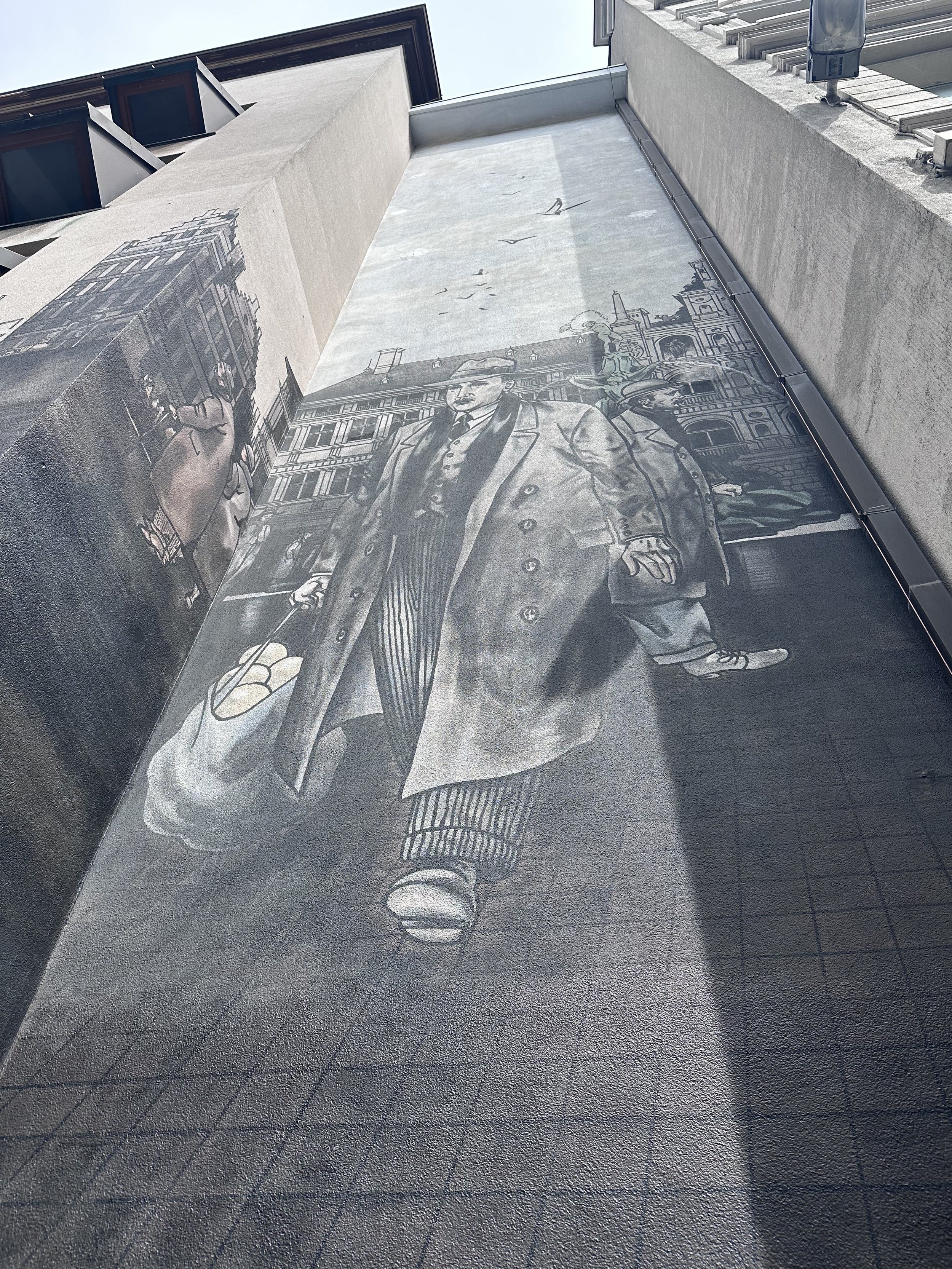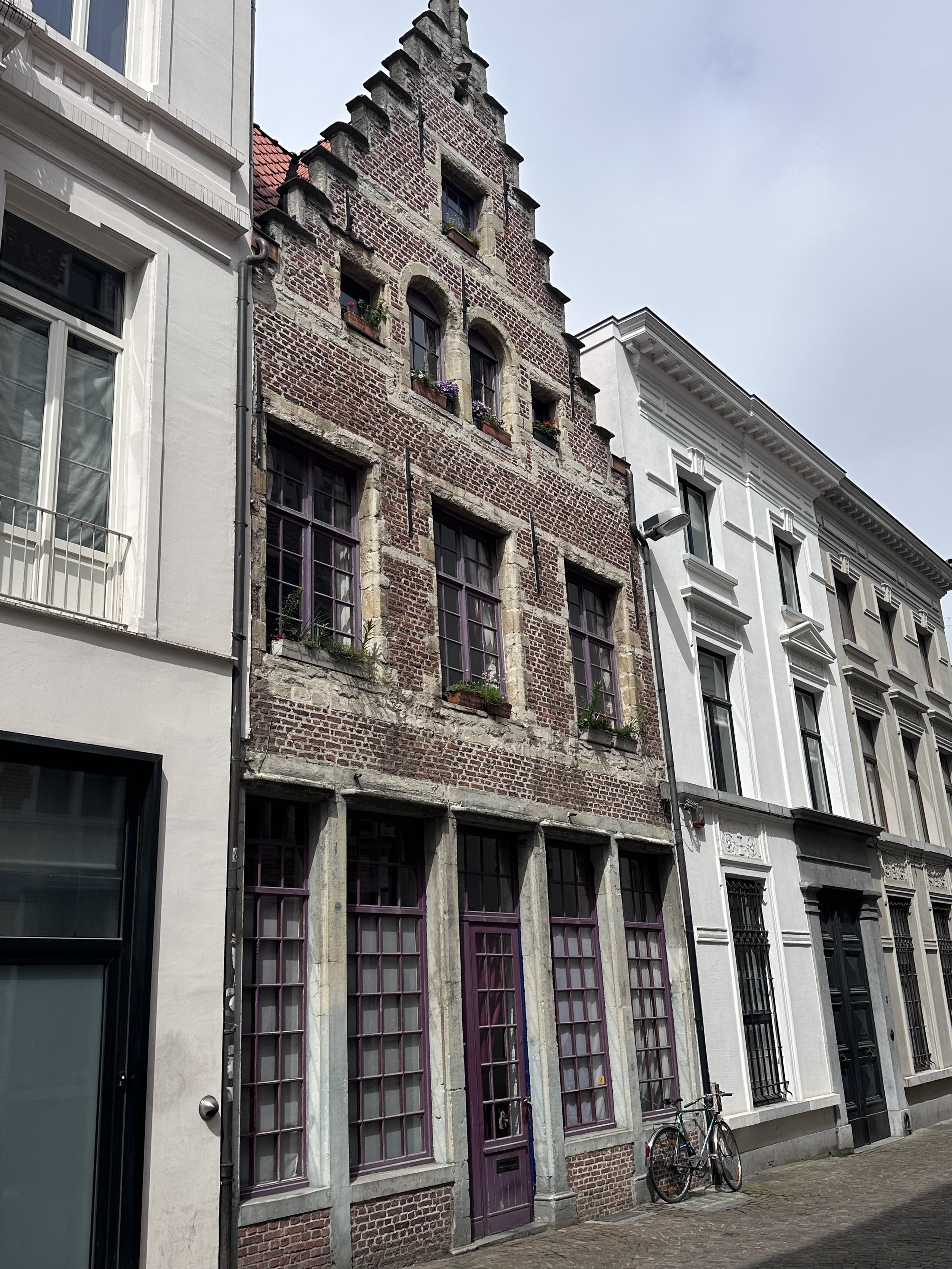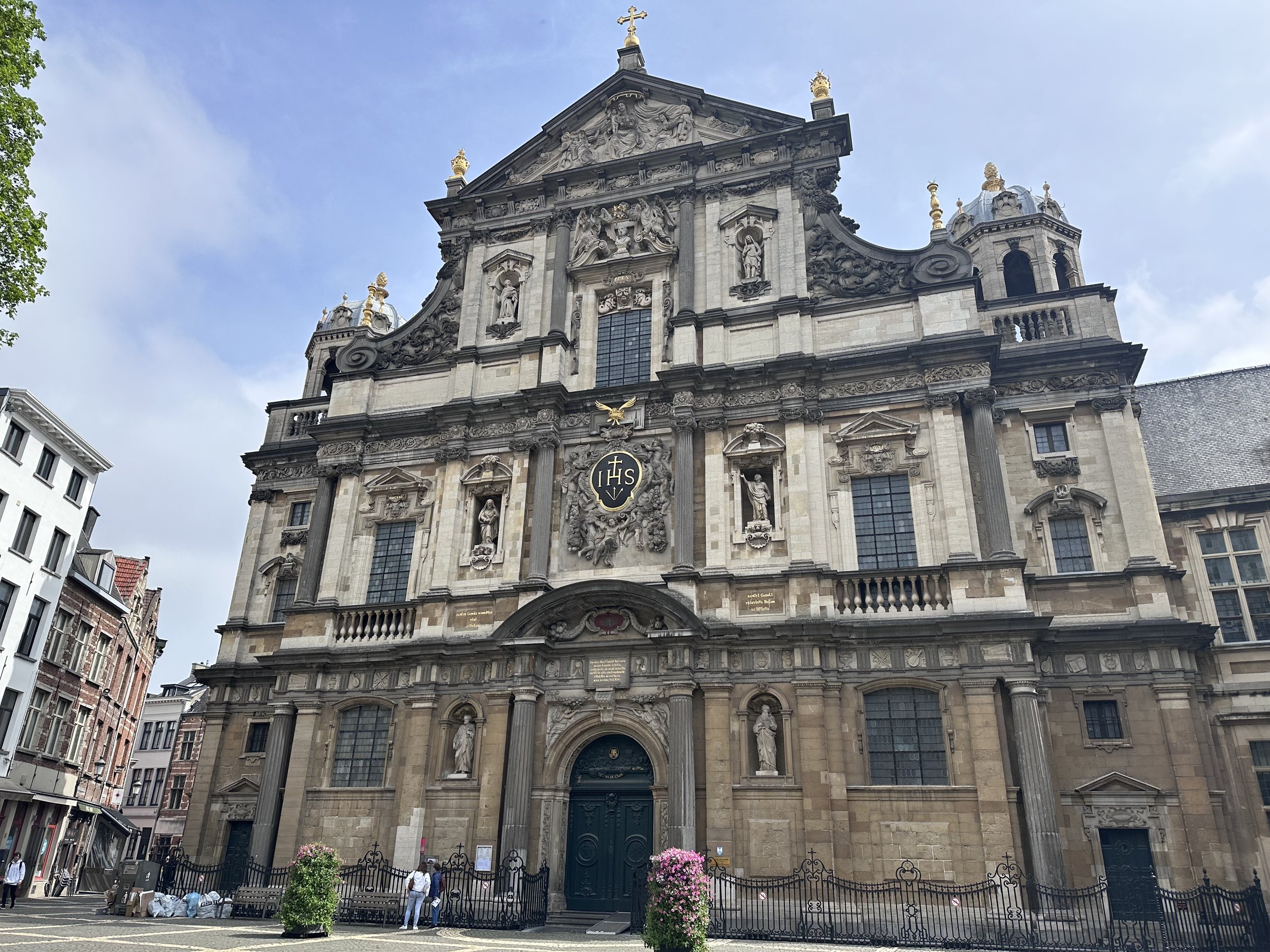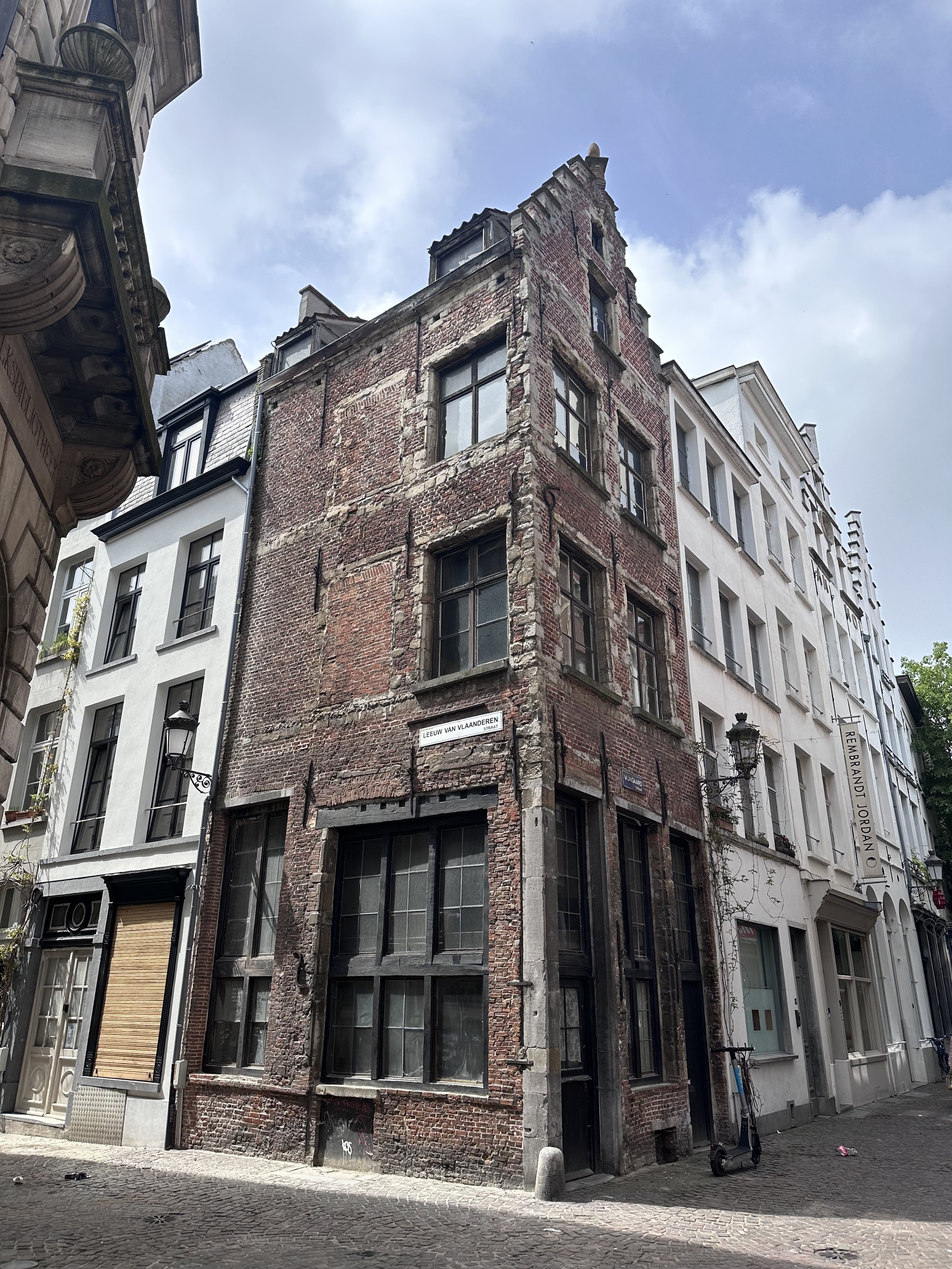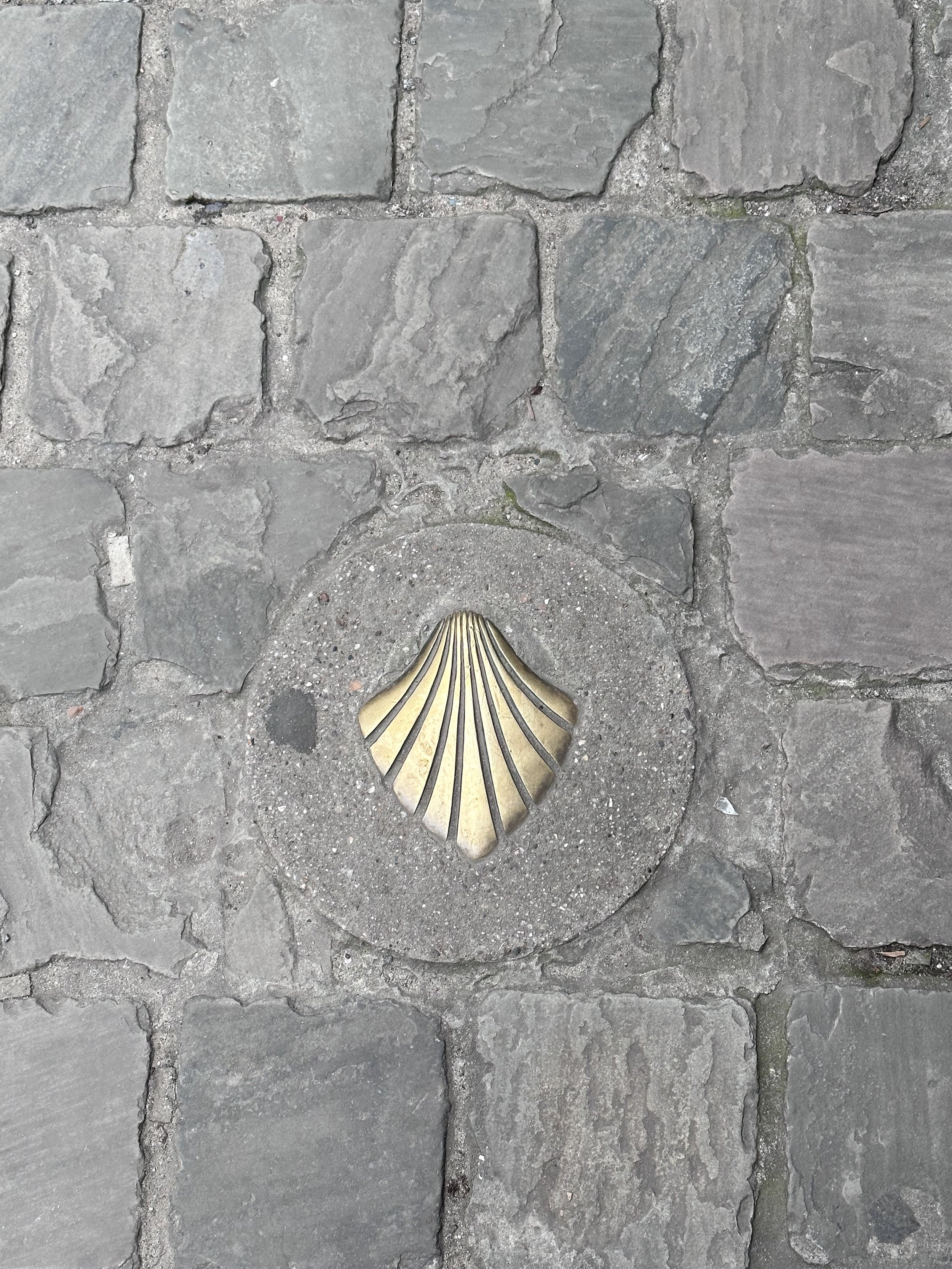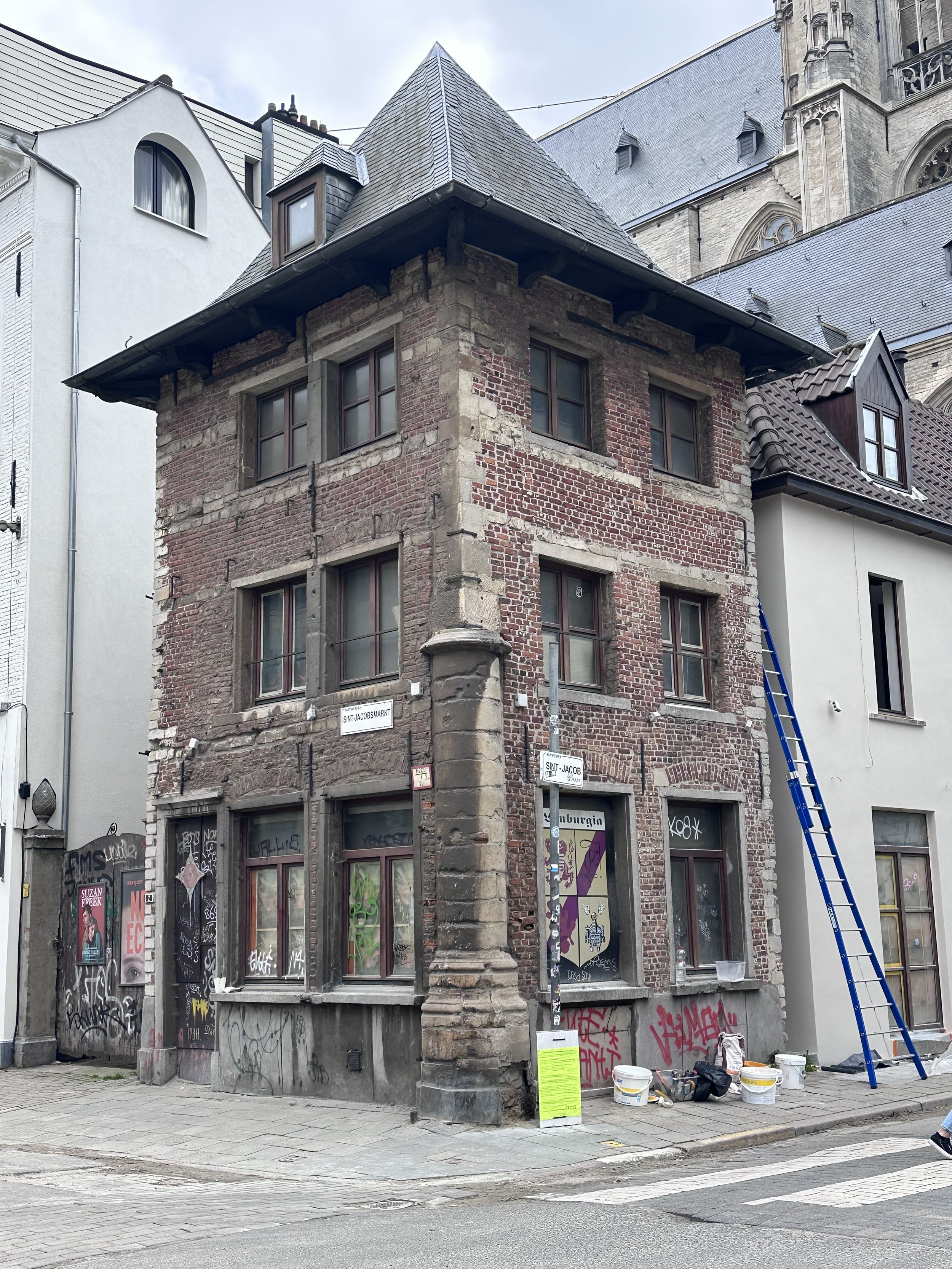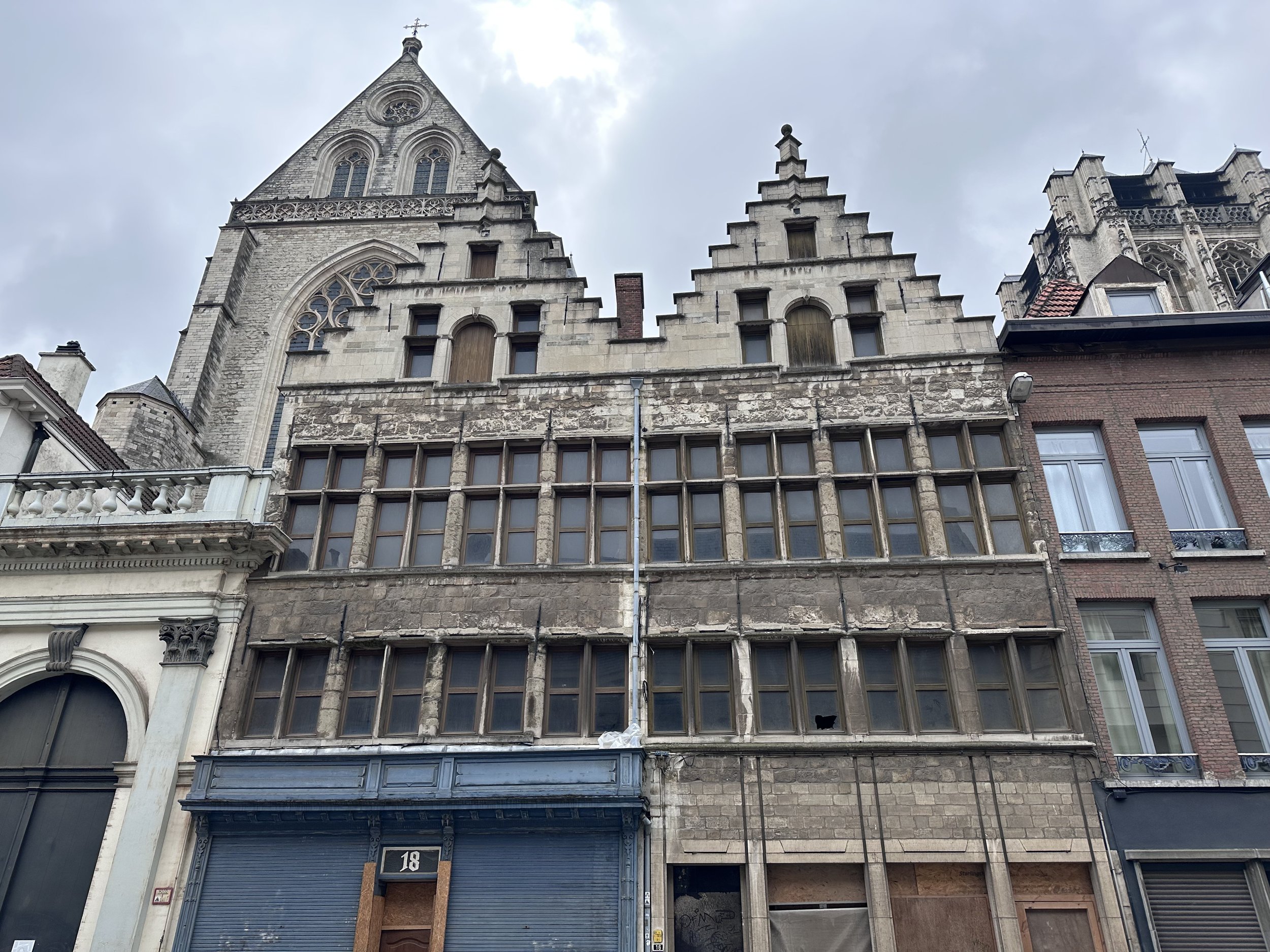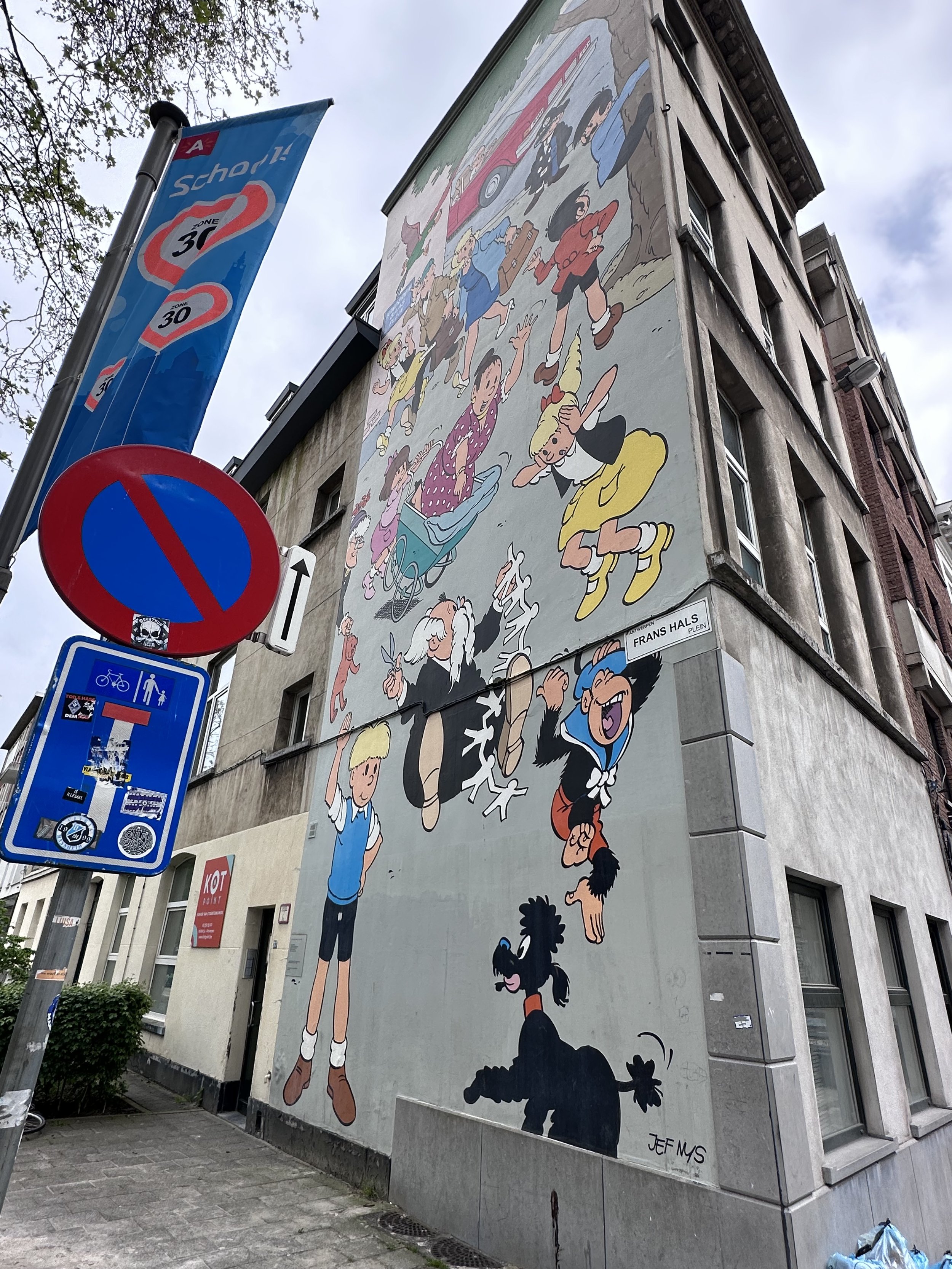Exploring Antwerp, Belgium
Time needed in this city: 1-2 nights
From Amsterdam, we decided to take a day trip to Antwerp, Belgium - a beautiful city that has managed to combine history with a modern way of life. We had such an amazing time there, though we do agree you only need a day there to see it all.
The below information is a complete guide of the best places to stay, the top rated places to dine and drink, and all there is to see and do. We’ve also included a summary of the history of this great city!
Jump To:
Where to Stay
Though we only did a day trip there, here are the top recommendations if you choose to stay in Antwerp:
Hof Markgraaf | Historisch Hotel - One of the oldest buildings you can stay in - it dates back to the 15th century.
Where to Dine & Drink
ArriKiiati
Michelin-rated, they serve Sicilian cuisine.
A'Sur
A Michelin-rate restaurant serving French/Belgian/Venezuelan fusion cuisine. They also have a notable rum list.
Biestro H-eat
A Michelin-rated restaurant that serves Flemish classics, Asian nuances, and Mediterranean flair.
Bistrot Du Nord
A Michelin-starred bistro, they serve traditional French cuisine, via a tasting menu. However, you must have no allergies and are an adventurous eater.
Bistrot L'ilot
Michelin-rated, the bistro’s theme revolves around a selection of pure, varied and delicious dishes to be shared.
Centpourcent
A Michelin-starred restaurant serving modern cuisine.
De Pottekijker
Upscale Belgian cuisine.
DIM Dining
A Michelin-starred restaurant serving Asian cuisine.
DÔME
Dine in the dome of a former late 19th century art nouveau manor house. They serve upscale French cuisine in a lavish setting.
Elsie’s
Traditional Ethiopian cuisine.
Eyckerhof
A Michelin-starred restaurant serving modern French cuisine.
Fine Fleur
A Michelin-starred restaurant serving creative contemporary cuisine.
FRANQ
Serving modern global cuisine, Michelin gave them one star… and this description, “FRANQ is awash in the same restrained glamour as its namesake hotel, i.e., a posh townhouse dripping in well-heeled class and understated luxury. Tropical artwork adds an individual touch, while the secluded patio shelters you from the bustle of the city. The open-plan kitchen showcases Tim Meuleneire and his brigade weaving their magic. The chef is noted for his technical wizadry, in particular in the field of sauces, such as the truffle sauce served with venison. However, his almost ethereal pistachio-flavoured soufflé subtly combined with a hint of strawberry is similarly out of this world. Classical and avant-garde all at once, the culinary score deserves our applause.”
Frites Atelier
While their croquettes are not gluten-free, their french fries are fried in a separate, dedicated fryer! They serve the most perfect crunchy, pillowy fries with a variety of sauces and toppings. The only regret was not ordering seconds. Check out Blackbeard’s video review below:
Graanmarkt 13
As the name would suggest, this place is full of upscale shops, living space, and food concepts. Both their restaurant and cafe are raved about, serving vegetarian cuisine. The Michelin Guide gave it one green star.
Hertog Jan
A TWO Michelin-starred restaurant, located in the Botanic hotel, they serve artistic and creative Asian cuisine. Note: You are not allowed to take any photographs, nor post anything on social media.
Het Gebaar
A Michelin-starred restaurant serving extremely creative and artistic cuisine (it’s almost too pretty to eat) with to-die-for pastries.
Hofke van Bazel
A Michelin-starred AND Michelin green-starred restaurant serving fresh vegetarian (from their own garden) and fish dishes in a Northern Italian setting.
In De Balans
The oldest paint store in Antwerp (146 years), they decided to keep the original name. They serve French-Italian cuisine in the form of tasting menus.
InVINcible
Serving global fare with a fantastic wine list.
Le Pristine
A Michelin-starred restaurant serving contemporary Italian cuisine.
Nage
This medieval mansion has been restored into a cosy, trendy vibe. They serve modern French recipes and have been Michelin-rated.
Nathan Restaurant
A Michelin-star restaurant serving tasting menus of French-Belgian cuisine, inspired with Asian influences.
Nebo
A Michelin-starred restaurant, they serve contemporary cuisine with first-class ingredients flown in from all over the world.
Ni Shifu
This Michelin-rated restaurant serves 10 pages of Chinese and Sichuan fare.
Nuance
A TWO Michelin-starred restaurant serves highly creative food-pairing dishes.
Okoz
Serving Japanese cuisine.
Pazzo
Upscale global fare, specializing in French, Italian, and Japanese.
Satay
Asian cuisine - great for lunch with many gluten-free options!
september.
A Michelin-rated restaurant serving mostly vegetarian fare in a minimalist atmosphere.
Shuk
Serving street food of the markets of Tel Aviv and Jerusalem.
Signatuur
Michelin-rated, this restaurant serves modern cuisine with a fantastic wine list.
Simply Marie.
Great for breakfast or lunch, they serve healthy bowls.
Spritz
Plant-based Italian cuisine
't Korennaer
A Michelin-starred restaurant serving modern cuisine.
The Jane
TWO Michelin-starred restaurant, this chic eatery is in a former military hospital chapel with soaring ceilings. They serve global, modern, high-concept plates.
The Village
Specializing in traditional Asian cuisine. They are well-known for their sushi and sushi-making classes.
Trattoria Bazalia
A Michelin-rated restaurant that is the Italian sibling of Hofke van Bazel (upstairs from that Michelin star establishment). Its romantic interior is perfect for a dinner for two, possibly alfresco on the patio overlooking a pretty church.
Zilte
A THREE Michelin-starred restaurant offering diners a global emotional experience, starting with the skyline of Antwerp from the top floor of the Museum aan de Stroom, and ending with a texture-based journey, often pairing together unexpected foods. The Michelin guide named Head Chef, Viki Geunes, “the best chef of his generation”.
Things to See & Do
Historical Exploration
Built between 1895 and 1905, the train station took a significant hit during WWII, due to the impact of V-2 rockets. Though the structural stability of the building remained intact, the warping of the substructure remains visible due to a lasting wave-distortion in the roofing of the hall. In the mid-20th century, the building's condition had deteriorated to the point that its demolition was being considered. The station was closed on January 31, 1986 for safety reasons, after which restoration work to the roof and façades was performed.
Since it’s the main station that connects to many other European countries, we arrived there and were blown away by its beauty.
Heritage Library Hendrik Conscience
In 1481, city secretary Willem Pauwels donated his collection of 41 books to the City of Antwerp. In 1505, the collection was placed in Antwerp City Hall. This original collection was lost in 1576, when the city hall caught fire during the Spanish Fury. The city soon decided to rebuild the library, and Christopher Plantin and his successors donated a copy of each book they printed, including the Biblia Polyglotta and Opticorum libri VI of Francis Aguilonius. In 1594, the new library was again housed in the city hall, but this time, in the former room of the militia - the Camer van de Librarye.
In 1604, Bishop Joannes Miraeus founded the Antwerp seminary, which was responsible for the education of the secular clergy. There soon was a need for a private library, so Miraeus appointed his erudite nephew Aubertus Miraeus as the librarian. Aubertus created an expansive humanist collection, thanks to donations of scholars, wealthy citizens and book printers. In 1609, the chapter started negotiations with the city council to merge the two libraries. Aubertus Miraeus made an inventory of the chapter library and published it as Bibliothecae Antverpianae Primordia. He mentions 356 works, including 32 manuscripts. In 1617, the two libraries merged. The resulting collection was housed in the seminary.
Since that time, the library has continued to grow and expand, which has required several moves to new and larger spaces.
Red Star Line Museum
Between 1873 and 1934, three million people emigrated to America using this historic shipping line. Check out the artifacts and stories from some of those that did.
Rubenshuis
The Rubenshuis is the former home and workshop of Peter Paul Rubens in Antwerp. Purchased in 1610, Rubens had the Flemish townhouse renovated and extended on the basis of designs by Rubens himself. Unfortunately, tourism has taken its toll on the original building and is closed for renovations indefinitely.
Steen Castle
Built in the 11th century (and refurbished in the 16th century), Steen Castle (Stone Castle) was erected on the banks of the river Scheldt to protect Antwerp and its port from Viking raids (it also served as a prison for 500 years). Once part of a much larger set of fortifications, this small castle is the oldest building in the city.
Relgious History
In 1352, construction began on this church and although the first stage of construction was ended in 1521, it has never been fully “completed“ (though it still holds the title of “Belgium’s Largest Church”. Sadly, after 170 years of construction and just 12 years after its opening it was largely gutted by a massive fire, though its structure saved. After restoration, it received its Cathedral status in 1559 but lost it from 1801-1960 (it also lost more parts of the cathedral due to bouts of arson by the Protestants and wars with many artworks ruined or stolen). In 1816, various important works of art were returned from Paris, including three Rubens masterpieces. Over the course of the 19th century, the church was completely restored and refurbished and again from 1965 to 1993.
Out of all the Cathedrals I’ve been to in the world, this one spoke to me in a way I could not have imagined. Each chapel, ornate stained glass window, grave in the floor, and iconography left me feeling overwhelmed of the power of what religion meant to the city for centuries. As a fun surprise, towards the end, guess the songs the bells were playing (hint: One is from a famous Disney movie).
Sint-Pauluskerk (Saint Paul’s Church)
The church is located in the old city center of Antwerp, just a few steps from the Scheldt river, in a district where sailors used to live. A small church was initially built here by the Dominican Order and consecrated in 1276. However, with the rising tides of the river, the church kept flooding, requiring a new church be built next to it - one that could withstand it. The church was taken into partial use in 1548 and in the following year, the old church was demolished. The new church was completed and dedicated in 1571. As with all other Catholic churches during that time, it was taken over by another religious sect and partially demolished to convert it for their use, as well as for wartime ammunition. It was rebuilt from 1606 - 1616 and then renovated in 1662 however, in 1679, a fire partially destroyed the church, which then caused a rebuild of that side until 1681, along with the completion of the rest of the design in 1747. From there, it changed hands a few times helping to protect the contents inside the church. In 1830, during the Ten Days' Campaign, a Dutch garrison bombed part of the church, destroying the 17th century stained glass windows. And, although restoration and renovation efforts were made and completed, in April 1968, a fire destroyed the entire roof of the church, damaged the vaults and the interior, and completely burned down the top of the Baroque tower, reducing 3/4 of the monastery to ruins. The restoration works have taken a long time to complete.
The Arts & Sciences
MAS (Museum aan de Stroom)
The museum is located along the river Scheldt in the Eilandje district. It opened in May 2011 and is the largest museum in Antwerp with an impressive amount of artifacts that connect Antwerp to the larger world.
Plantin-Moretus Museum
Set in a delightful medieval building with a beautiful courtyard lying at its heart, the museum boasts the two oldest remaining printing presses in the world. Once one of Europe’s leading printing companies in the 1600s, its presses have been well-preserved, alongside some of the old manuscripts and books they used to produce. They also have an incredible library to explore as well.
Unique Experiences
The largest Belgian chocolate museum in the world… that is TOTALLY worth visiting! Your experience starts with an hour-long interactive journey about the chocolate-making process, taking you into the Amazon, on a shipping vessel, the bean inspection process, the refinement process, and the chocolate making process. We were surprised and delighted through every room we went in that was made to feel like each part of the process - from sights, to smells, to sounds. At the end, you’re rewarded with a chocolate tasting of 10 different kinds, and we left there with four of them. We recommend you take the time to do this experience because it’s about as close as you can get to Willy Wonka himself.
Walking Tours
Antwerp Diamond District
Lying just to the west of the Antwerpen-Centraal train station, Antwerp’s Diamond District is where you’ll find hundreds of shops and workshops that sell all kinds of jewelry, as well as both rough and polished diamonds. It’s largely run by the city’s Jewish residents, with roughly 80% of the world’s uncut diamonds passing through there (although in recent years, both Indians and Saudis have shifted the market to those parts of the world). To learn more about avoiding the unfortunate scams taking place, click on that link above.
Antwerp Zoo
Opened in 1843, it’s one of the oldest animal parks in the world and can be found right next to Antwerpen-Centraal train station. It’s internationally renowned for its preservation and breeding programs and houses over 4,000 animals, reptiles, and birds.
Grote Markt
The Grote Markt (Big Market) is the central square of Antwerp and is situated in the heart of the old city quarter. It’s surrounded by the city's Renaissance Town Hall, as well as numerous guildhalls with elaborate façades, the majority of which are reconstructions in the 19th and early 20th century. A few of the guildhall façades, such as that of Sint-Joris' are intact originals entirely dating back to the 16th century.
The big highlight of the Markt is its amazing Baroque-era Brabo Fountain, depicting Brabo – a famous giant-slayer - chucking a giant’s hand into the air. It’s from this legend that the name Antwerp came about: ‘hand werpen’ in Dutch means ‘to throw a hand.’
wandering the city
We always take time to get “lost” in the streets of wherever we are. In this case, it provided us an education of Antwerp’s economical highs and lows over the centuries and how WWII caused an entire city to be rebuilt… then in need of rebuilding again. You can certainly see the timeline of what this city had gone through with beautiful gabled buildings in need of restoration, contrasted with the post-war era concrete buildings, perhaps next door to very modern ones that have recently been built. It’s clear its identity is changing and perhaps, for the better. But, what we also estimated was that aside from the Grote Markt, Antwerp will look very different in the next 10 years with most of its history erased. We recommend visiting there sooner than later.
A History Summary
2nd - 4th century - Pronounced “an-twerp”, the earliest origins of the town were discovered to be around mid-2nd to 3rd century, with the town receiving its name from the German Franks around the 4th century.
9th century - Het Steen castle is estimated to have been built.
1200 - 1225 - The surviving gateway of the castle was built as a gateway to a larger castle of the Dukes of Brabant, which was demolished in the 19th century. The gateway is said to be the oldest surviving building in Antwerp.
1500 - 1569 - After the decline of Bruges, the city of Antwerp, then part of the Duchy of Brabant, grew in importance, with the city doubling its population.
End of the 15th century - The foreign trading houses were transferred from Bruges to Antwerp.
1504 - The Portuguese had established Antwerp as one of their main shipping and processing bases, bringing goods in from all over the world, then turning some of it into soap, fish, sugar, and especially cloth.
1531 - Their stock exchange opening of their stock exchange
1574 - The city's banking business declined as England ceased its borrowing in Antwerp.
1576 - Spanish soldiers sacked the city during the “Spanish Fury”, resulting in 7,000 citizens massacred, 800 houses burnt down, and over £2 million of damage done.
1579 - It became the capital of the Dutch Revolt.
1585 - Alessandro Farnese, Duke of Parma and Piacenza, captured it after a long siege and as part of the terms of surrender its Protestant citizens were given two years to settle their affairs before quitting the city. Most went to the United Provinces in the north, starting the Dutch Golden Age. Antwerp's banking was controlled for a generation by Genoa, and Amsterdam became the new trading center.
1648 - 1863 - The recognition of the independence of the United Provinces by the Treaty of Münster stipulated that the Scheldt should be closed to navigation, which destroyed Antwerp's trading activities. This impediment remained in force until 1863.
1800 - Napoleon realized Antwerp’s strategic importance. He allocated funds to enlarge the harbor by constructing a new dock (still named the Bonaparte Dock), an access-lock and mole, and deepening the Scheldt to allow larger ships to approach Antwerp. He hoped that by making the harbour the finest in Europe, he would be able to counter the Port of London and hamper British growth. However, he was defeated at the Battle of Waterloo before he could see the plan through.
1830 - 1832 - The city was captured by the Belgian insurgents, then captured by the French, inflicting massive damage until December 1832 when the Siege of Antwerp finally ended.
1894 - Antwerp presented itself to the world via a World's Fair, attended by 3 million.
WWI - It was occupied by the Germans until the Armistice
1920 - The city hosted the Summer Olympic Games.
1940 - 1944 - It was occupied by Germany on May 18, 1940 and liberated by the British 11th Armoured Division on September 4, 1944. After this, the Germans attempted to destroy the Port of Antwerp, which was used by the Allies to bring new material ashore. Thousands of Rheinbote, V-1 and V-2 missiles were fired (more V-2s than used on all other targets during the entire war combined), causing severe damage to the city but failed to destroy the port due to poor accuracy. After the war, Antwerp, which had already had a sizeable Jewish population before the war, once again became a major European centre of Haredi (and particularly Hasidic) Orthodox Judaism.
Post-WWII - Today - The city has done a lot of work to rebrand itself, particularly as it relates to fashion, transportation, and diamonds- roughly 85% of the world’s diamonds pass through there, though that is starting to shift towards Mumbai and Dubai.
